written by Alison Ure
Good evening everyone,
I hope you’ve had a pleasant day. Grab a beer or drink of your choice and settle down. After a hot day geologising my preference is a malt efes, its smoother than the standard brew and slips down very easily.
Attached are a group of power point slides from a lecture I have done on this subject and also the story behind my discovery which was published in the OUGS Proceedings in April 2018. If you read that it’ll save me time here.
The reason for this talk is that I discovered a new meteorite impact event which created Kas bay. If you read the story you’ll see the time and effort it took to turn a crazy idea into reality. It was in the back of my mind when running the last 3 trips but since then it has been proved, well almost, I decided to add a day to this trip for you to see the evidence I’ve found to substantiate the discovery. Apart from myself and 3 other people you will be the first to view some of this evidence for real.
Impact science is a relatively new in Earth sciences and not a lot is taught about it so unless you have a vested interest it often passes people by. If you already understand the processes following an impact event then just enjoy your drink and have a doze. If not hopefully you will have a better understanding of what to look for after this.
The first few slides, 1 to 5 show you how I came up with the idea the bay was a crater. My initial thoughts were old volcano, an idea actually researched by a Turkish University, but when I started to research the first trip in 2011, I realised it was the wrong type of rock, slide 6. Cretaceous limestone does not a volcano make. So the only thing that creates similar geomorphology is an extraterrestrial impact. How?






The 7th slide shows you the two main types of impact crater found on Earth. There is a 3rd rarer one normally found on Mars but with only one example on Earth in Germany. We needn’t worry about that one as it’s not relevant. The cause of both types of craters is the same. A bolide crashes into the Earths surface makes a big hole and a big bang. The size of the bolide determines the size of the crater. The smaller craters, less than 1.5km in diameter, are simple craters the larger ones over 1.5 km in diameter are complex craters. The best known simple crater is the Arizona/Meteor or Barringer crater

(it has all 3 names) which is 1.2 km across and a simple bowl shape, the meteor was approximately 55 m in diameter. With the complex crater, because the impactor is bigger, there is more energy released on impact so the ground rock reacts slightly differently and after being initially compressed rises up in the middle to produce a central peak. It is similar physics at work to a slow motion film of a raindrop but not quite. I’m not entirely sure of the difference and that is best analogy I can give. Slide 8 shows the progressive development of a complex crater. D shows the finished crater and the not very clear labels are central peak, the bump in the middle, marginal collapse zone, the stepped faulted ground at the edge, ejecta layer on the top and melt layer around the central peak.
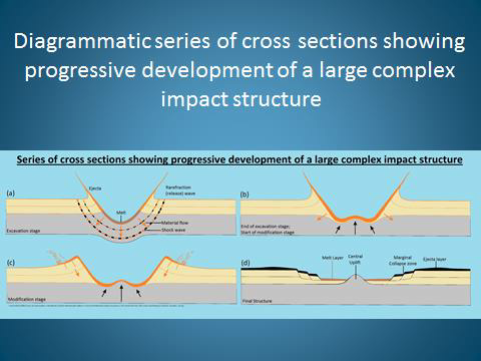
Kas bay crater is a complex crater, slide 9 shows the marginal collapse zone and the top of the central peak being the five islands dive site.
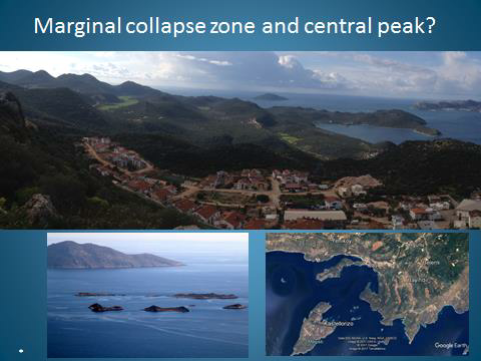
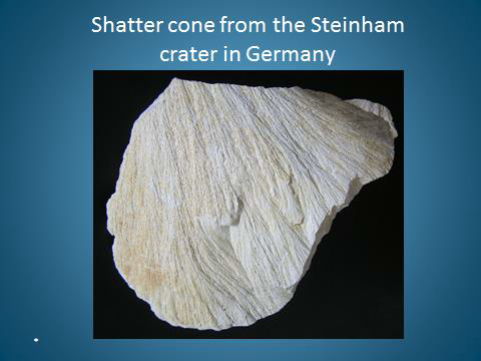
Finding out the type of field evidence to prove an impact crater on an all carbonate basement rock is far from easy as quite frankly there is little written about it. Shatter cones (slide 10) were what I was told to look for. However shatter cones form around the central peak resulting from the shock wave passing through the rock creating the shape and form you see in the slide. My central peak is mostly underwater, so a very unlikely find to make. Thin sections to show pdfs in quartz or other silicate mineral, (planar shock deformations) diaplectic glass (slide 11) or polymorphs of quartz , stishovite or coesite (slide 12) are not possible to find in carbonates as no silica. All of the above are specific criteria accepted by the impact community as proof of a meteoritic impact. Not helpful to me at all.
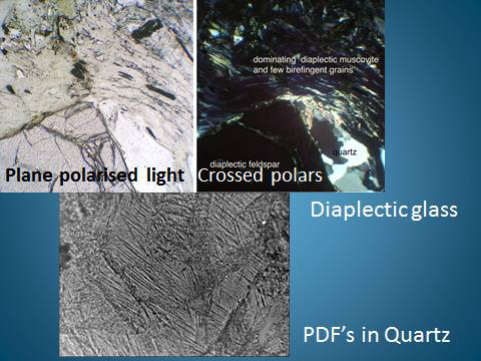

So what else shows this impact event has happened? there have to be clues in the field and there are when you know what to look for. I eventually found someone to tell me that all the strange breccia I was seeing around the whole area was impact related, slides 13 to 16.
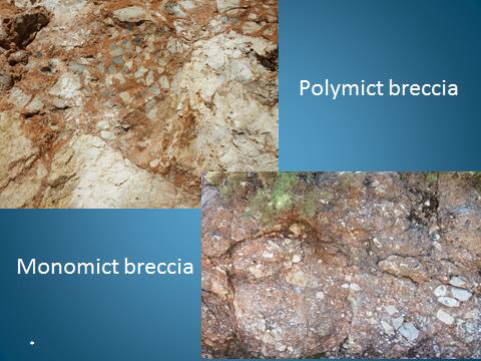
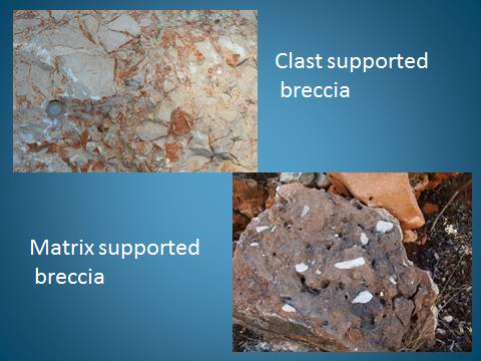
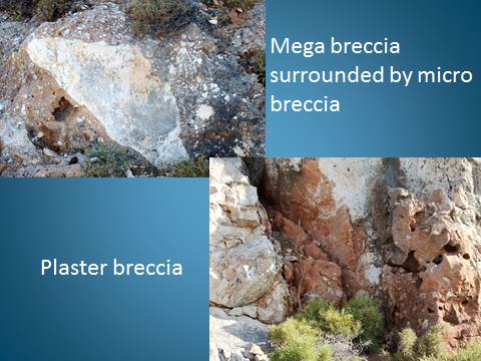
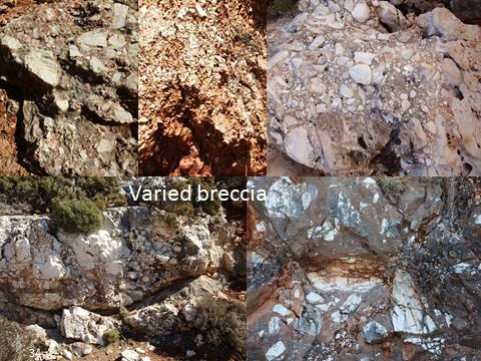
Slide 17 shows the result of a process called breccia in breccia, this is what it says on the tin, brecciated rock within brecciated rock. This is rarely found anywhere except in an impact event. It occurs during the excavation stage and all though I have had it explained to me I still don’t fully understand how it is formed considering it happens in a relatively short time, minutes. You can have up to 6 breccia generations which are difficult to describe on the slide but I’ll do my best. In the photo bottom left with my hand lens on a red lanyard, you can see a whitish area on the right hand side. This is breccia and the pink bit to the left is also breccia so that is two generations. Within the whitish rock is another separate piece of breccia which is difficult to see unless you are actually looking at it, making 3 generations in all. Its in the top left hand bit of it but even magnifying the slide doesn’t make it too clear, you’ll just have to trust me on this one.
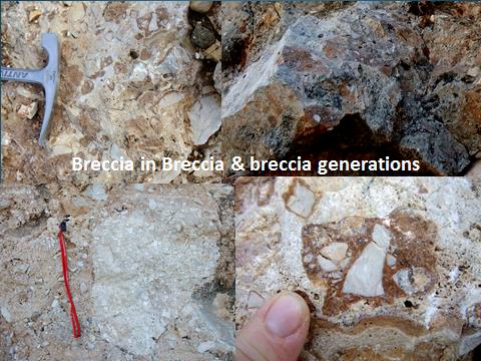
Slide 18 shows a variety of breccia dykes both large and small. This is easier to explain. Bollide hits the ground, ground mass pulverized and thrown in the air, ground splits due to impact, pulverized ground mass falls back into crack sometimes with additional clasts included. I realiesd last year that this is what I described as ‘plaster breccia’. So I’d seen it all along but only understood what I was seeing 6 months ago.
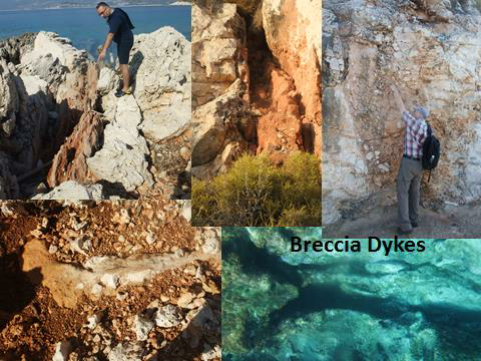
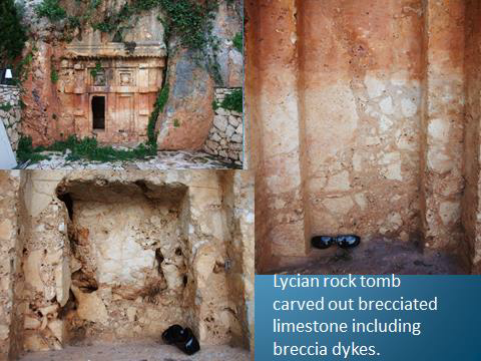
Slide 19 shows breccia dykes in Lycians rock tombs. The Lycians, who lived 3000 yr ago who carved their rock tombs in Kas, had no idea they were carving impact debris. Slide 20 shows breccia dykes below the foundations of town houses. Slide 21 shows ‘fitted fragments’ in macro and micro. This jigsaw like break occurs when the clast is under high pressure but confined at the same times, so snaps but doesn’t move from where it broke.
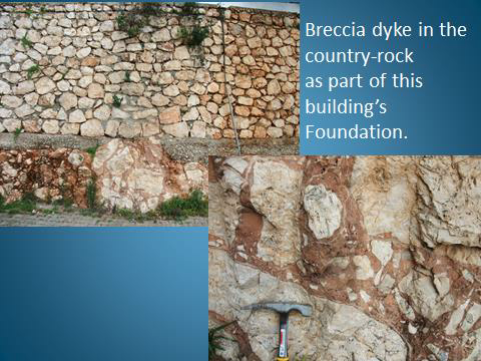
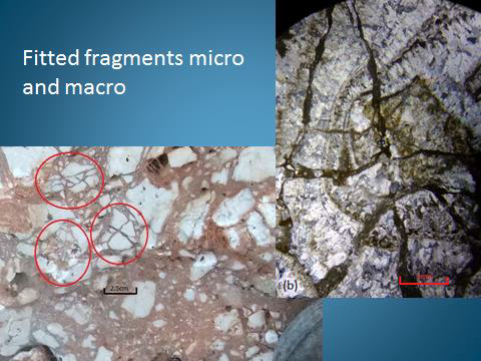
Carbonate doesn’t melt in the same way silica does so doesn’t leave the same signature. If it does melt it will often revert back to calcite over time. Decarbonised limestone occurs when great temperatures have been reached, slide 22 shows examples of both.
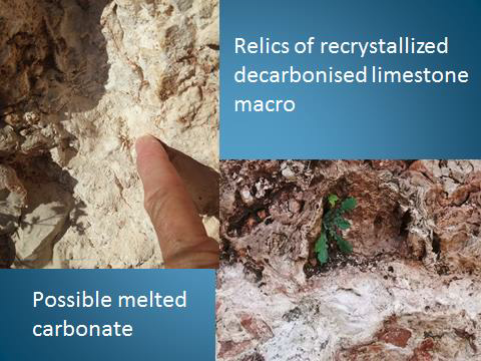
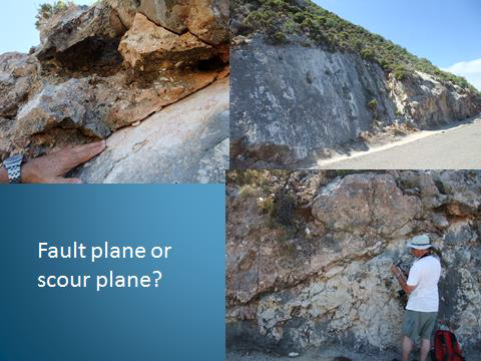
When I first saw the ‘wall’ in slide 23 it looked like a normal fault, but it shouldn’t be where it is as there are no faults in the area. On closer inspection the ‘wall’ is brecciated as it the broken layer on top of it which has breccia in breccia in it. This is a scour plane similar to what you get in glaciers where one section of ice slides over another section of ice or rock.

Now to what you can see under the microscope. Calcite does produce a signature, slide 24, of multiple twinning but, this could also be as a result of tectonics, and this is a highly tectonic area. However when the twins are a regular size of 1 micron it is associated with high pressure deformation equivalent to pdf’s in quartz. The final slide shows accretionary lapilli which looks like miniature breccia in breccia, that might give an understanding to how the latter forms. Accretionary lapilli is also found in volcanic debris but is still common on impact sites.
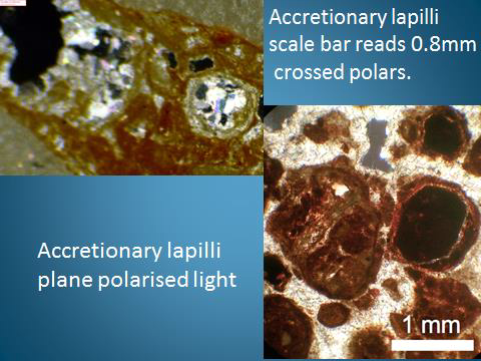
Now we won’t have any microscopes in the field but we will be able to see, breccia in breccia, breccia dykes, mega breccia floating in micro breccia, clast supported and matrix supported breccia and the scour plane, all of which are clear field evidence of an impact event. Individually they may not point in that direction but collectively there is no other explanation. Not however enough to convince the impact community of absolute proof. That lies hopefully in the chemical make up of the breccia dykes matrix which should include the signature of the meteorite which will have vaporised on impact, not disappeared but become part of the pulverised ground mass filling the cracks. Samples are currently in Izmir university being analyzed. Fingers crossed for a positive result.
Does any one have any questions before we head out to eat?
Enjoy your meal and remember its an early start tomorrow.
Alison